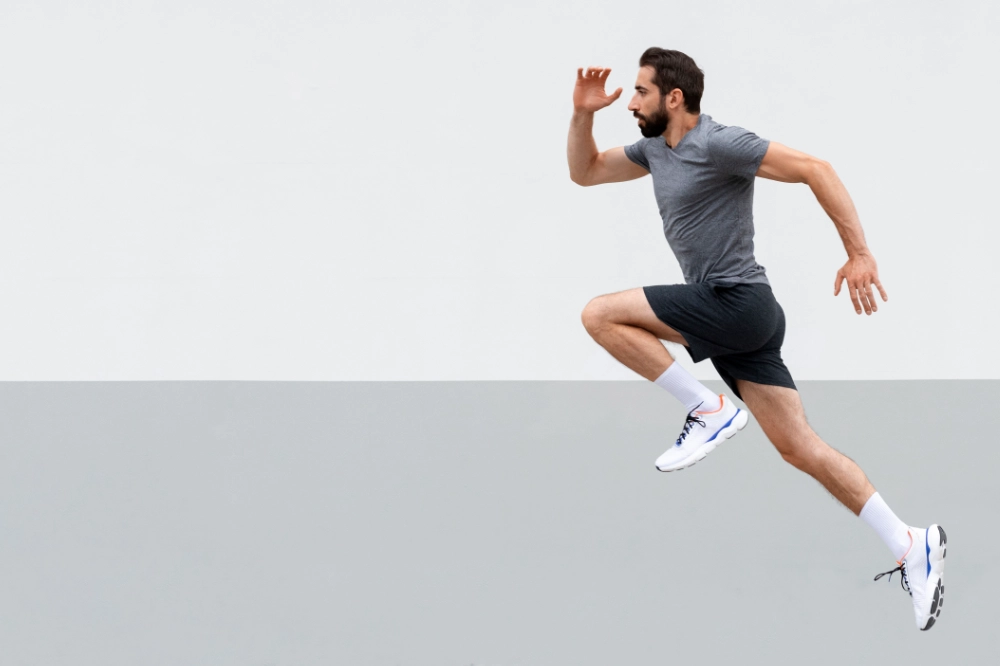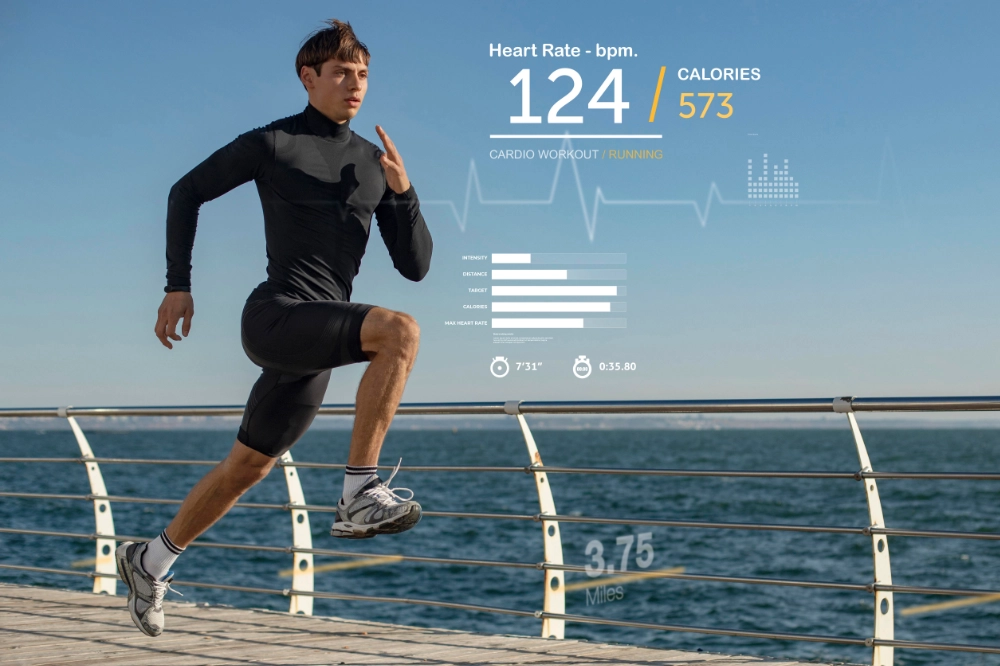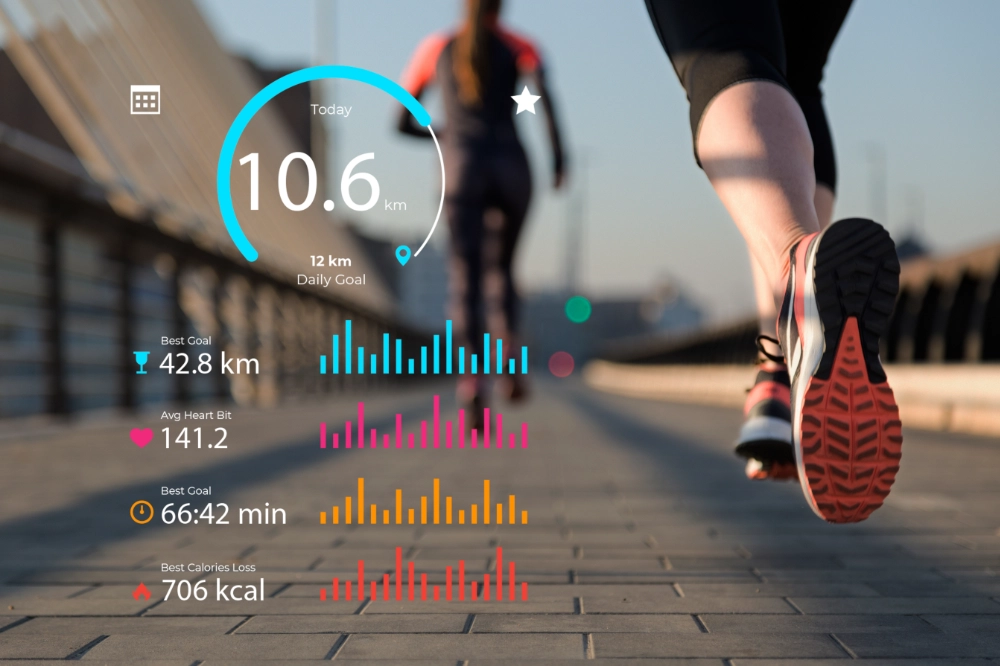VDOT Running Pace & Race Time Calculator
Optimize Performance with the VDOT Method
Calculate your running potential, predict finish times, and tailor your training with the scientifically backed VDOT calculator—used by elite athletes and coaches around the world.
Free VDOT Calculator
Unlock your true running potential with the free VDOT Calculator—a science-based tool trusted by elite coaches and runners worldwide. Based on Dr. Jack Daniels’ methodology, it estimates fitness, predicts race times, and personalizes training paces. Ideal for marathoners or first-time 5K runners to train smarter and race stronger.
What's your VDOT score?
Discover Your VDOT Score
VDOT measures your current running fitness based on a recent or estimated race performance. Use our free VDOT calculator to instantly generate your VDOT score and personalized training paces.
Each pace is engineered to boost your endurance and speed. Learn more about VDOT science and how to train effectively at each pace.
Access Science‑Backed Fitness Tools
Enhance every aspect of your training with our suite of free calculators:
Dive deeper into training strategies in our fitness articles, covering recovery, nutrition, and performance optimization.
Personal Training & Coaching
Ready to take your results further? Work one‑on‑one with a certified sports science coach for custom programming and ongoing support. Explore personal training plans →
Easy Pace Running
Overview: Easy pace running encompasses a variety of low-intensity efforts, such as warm-ups, cool-downs, recovery runs between intense sessions, and extended endurance runs. It’s a foundational component of any running program, supporting overall fitness and resilience.
Intensity Level: This type of running typically occurs at 59-74% of your VO2 max or 65-79% of your maximum heart rate (HR max). At this effort, you can maintain a relaxed, conversational pace—often called the "talk test." Day-to-day fluctuations of up to 20 seconds per mile are normal, influenced by factors like energy levels, weather conditions, or terrain challenges.
Physiological Benefits: Easy pace running delivers key health advantages that lay the groundwork for more demanding workouts. It fortifies the heart, boosting its blood-pumping efficiency, while enhancing the muscles’ capacity to absorb and use oxygen. This aerobic conditioning supports recovery and prepares the body for higher-intensity training.
Sample Workout: An easy pace session generally spans 30-45 minutes, tailored to your experience and objectives. New runners might begin with shorter outings, while seasoned athletes can lengthen their runs to maximize endurance gains.
Marathon Pace
Variety: Sustained efforts at a consistent speed or prolonged intervals targeting a specific pace.
Intensity: Typically falls within 75-84% of VO2max or 80-90% of your maximum heart rate (HRmax), reflecting a robust yet maintainable effort.
Purpose: Designed to help marathon trainees adapt to race-day pacing or provide beginners with a structured option for long runs, differing from an easy pace approach.
Sample Workout: Start with 10 minutes at an easy pace (E), then transition to 60-90 minutes at marathon pace (M) to build endurance and pacing consistency.
Interval Pace
Variety: Intervals designed to enhance VO2max.
Intensity: Interval pace typically falls within 97-100% of your VO2max or 98-100% of your maximum heart rate (HRmax). This effort level is challenging yet not maximal—comparable to a pace you could hold for roughly 10-12 minutes during a competitive race. Ideal interval durations range from 3 to 5 minutes (such as 800m or 1000m repeats), paired with recovery jogs of similar timeframes to the work intervals. When workouts specify "hard" efforts, rely on perceived exertion and use your 5K race pace as a cautious benchmark for intensity.
Purpose: The main objective of interval training is to boost your aerobic capacity, particularly your VO2max. When performed at the correct intensity, your body requires approximately two minutes to reach VO2max, making 3-5 minute intervals optimal for sustaining this effort level. Exceeding 5 minutes may shift reliance toward anaerobic energy systems, elevating blood lactate levels and undermining the workout’s focus on VO2max development.
Sample Workout:
- 6 sets of 2-minute intervals at VO2max pace, with 1-minute jog recovery between each.
- 5 sets of 3-minute intervals at VO2max pace, with 2-minute jog recovery.
- 4 sets of 4-minute intervals at VO2max pace, with 3-minute jog recovery.
These workouts progressively extend interval length while adjusting recovery periods to enhance both speed and endurance.
Threshold Pace
Variety: This includes steady, prolonged runs like tempo sessions or intermittent efforts known as cruise intervals.
Intensity: Typically, this pace corresponds to 83-88% of your VO2max or 88-92% of your maximum heart rate (HRmax). It’s a 'comfortably hard' effort that you can sustain for 3-4 miles (5-6 km) or during repeated intervals of 5-15 minutes, with 1-3 minutes of rest between each.
Purpose: The primary goal is to build endurance, preparing your body for sustained efforts in longer races.
Sample Workout: Try three 1-mile repeats at threshold pace with 1-minute rests, or a continuous 20-minute run at threshold pace.
Rep Pace
Variety: This includes short, fast efforts such as pace repetitions and strides.
Intensity: These efforts are performed at a swift pace, though not at maximum intensity, allowing for extended recovery periods between each repetition. This ensures each effort feels as manageable as the last, maintaining proper running form and avoiding undue fatigue. The recovery time should be sufficient—often matching or exceeding the duration of the effort itself—to prevent increased stress and maintain running efficiency. For instance, if a 400-meter repetition requires a 3-minute recovery to feel sustainable, that duration should be respected. Shortening rest intervals can compromise the workout’s effectiveness by increasing strain and reducing efficiency. This pace aligns closely with what you might sustain in a 1500m or mile race.
Purpose: The primary goal is to enhance running speed and efficiency, also known as running economy.
Sample Workout: Examples include eight 200-meter repetitions with 200-meter jog recoveries, or four 400-meter repetitions with 400-meter jog recoveries. These workouts prioritize consistent form and speed without excessive fatigue buildup.
Fast Reps Pace
Variety: This involves repetitions performed at the pace you'd maintain in an 800-meter race.
Intensity: Aim to replicate the effort of your most recent 800-meter race, but avoid exceeding that pace. A track setting is ideal for these sessions, as it allows precise speed control. Most repetitions will range from 200 to 400 meters, with elite athletes occasionally extending to 600 meters. Keep each effort under 90 seconds, and ensure recovery periods involve light jogging until you're fully ready for the next repetition.
Purpose: These sessions are designed to enhance your speed, engage your anaerobic energy systems, and help you internalize the rhythm of an 800-meter race.
Sample Workout: - 600m at rep pace (R) followed by 5 minutes of jogging - 2 sets of 400m at fast pace (F) with 4 minutes of jogging between each - 600m at fast pace (F) followed by 5 minutes of jogging - 2 sets of 300m at fast pace (F) with 3 minutes of jogging between each - 4 sets of 200m at rep pace (R) with 200m jogging recovery
VDOT Calculator Tools
Enhance your running journey with these options for the VDOT Calculator, crafted by Abooyeah, a sports science graduate with 14 years of experience in Dubai.
VDOT Running Calculator
Calculate your training paces — free and science-backed.
What's your VDOT score?
How Our VDOT Calculator Works
Unlock the science behind our VDOT Calculator, crafted by Dubai’s leading personal trainer, Abooyeah, a sports science graduate with 14 years of experience. Based on Dr. Jack Daniels’ renowned methodology, this tool empowers UAE runners to optimize their training paces and hit their goals—whether it’s a faster 10K or a marathon debut. Tailored for Dubai’s dynamic running scene, it delivers personalized insights to elevate your performance.
What is VDOT?
VDOT, or "V-dot-O2," is a running performance metric developed by Dr. Jack Daniels. It measures your aerobic fitness by combining VO2 max (oxygen utilization during exercise) and running economy (movement efficiency) into a single score, typically ranging from 30 to 85. For Dubai runners, this means a clear snapshot of your current ability—whether you’re training for a local race or a personal record. It’s a powerful tool to set precise training intensities, taking your running to the next level. Discover running coaching in Dubai to get started.
How to Use the VDOT Calculator
Using the VDOT Calculator is straightforward: input a recent race time and distance (e.g., a 10K in 50 minutes), and it generates your VDOT score. From there, it calculates personalized training paces for key workouts—easy runs, threshold efforts, and intervals—plus predicts your potential times for other distances. Update your VDOT every 4-6 weeks with fresh race data to keep your training on track. Ideal for UAE runners aiming to refine their pace in Dubai’s warm climate. Kick off your running journey with expert support.
Why VDOT Matters for Your Training
VDOT is rooted in exercise science, targeting specific energy systems to boost performance. Easy runs enhance aerobic endurance, threshold runs build stamina, and intervals sharpen speed—all based on your VDOT score. This structured method minimizes injury risk and maximizes progress, making it perfect for Dubai’s runners, from beginners to elites. With Abooyeah’s 14 years of expertise, this tool ensures you train smarter, not harder. Explore personalized training plans to crush your running goals.
Unleash the Power that was always yours to claim.
How to Use the VDOT Calculator for Your Running Goals
Take charge of your running journey in Dubai with Abooyeah’s VDOT Calculator, designed by a sports science graduate with 14 years of experience. Based on Dr. Jack Daniels’ scientific methodology, this tool helps UAE runners optimize training paces and achieve their goals, from 5K PBs to marathon finishes, tailored for Dubai’s vibrant running community.
Understand Your Running Fitness with VDOT
The VDOT Calculator, developed by Dr. Jack Daniels, measures your running fitness by combining VO2 max (oxygen uptake during exercise) and running economy (how efficiently you move). Enter a recent race time, like a 5K at Dubai’s JLT Park, to get your VDOT score (30–85), reflecting your current ability. This score sets the foundation for personalized training paces, helping you train smarter in Dubai’s warm climate. Calculate your VDOT to kickstart your journey with Abooyeah’s expertise.

Plan Your Training with VDOT Paces
Use your VDOT score to get tailored training paces for workouts like easy runs, threshold runs, and intervals. For example, a VDOT of 45 (from a 23:00 5K) might suggest an easy pace of 8:50–9:30 per mile for recovery runs along Dubai Marina. These paces target specific energy systems, ensuring you build endurance or speed without overtraining. Update your VDOT every 4–6 weeks with new race times to keep paces accurate. Plan your training with Abooyeah’s coaching for UAE runners.

Predict Race Times with VDOT
The VDOT Calculator predicts your potential times for races from 1500m to marathons based on your current fitness. For instance, a VDOT of 50 could indicate a 1:40 half-marathon, helping you set realistic goals for events like the Dubai Marathon. Adjust for Dubai’s heat and humidity, which may slow paces, by training at VDOT-recommended intensities. Optimize your race strategy with Abooyeah’s personalized coaching to hit your PB.

Integrate VDOT with Coaching for Success
Combine the VDOT Calculator with Abooyeah’s coaching to maximize results. Share your VDOT score with your coach to create a tailored plan, blending 80% easy runs (e.g., along Dubai Canal) with 20% speed work like intervals at Zabeel Park. This polarized approach, backed by science, boosts aerobic capacity and prevents burnout. Join Abooyeah’s running programs to align VDOT insights with your Dubai running goals.

Stay Consistent and Adapt to Dubai’s Environment
Consistency is key in Dubai’s fast-paced lifestyle. Recalculate your VDOT every 4–6 weeks to track progress and adjust paces. Account for Dubai’s heat by training early mornings or evenings and staying hydrated. Use a heart rate monitor to ensure you’re hitting VDOT paces, especially in humid conditions. Work with Abooyeah to stay on track with expert guidance tailored for UAE runners.

Optimize Your Workouts with VDOT Training Paces
Maximize your running progress with the VDOT Calculator’s precise training paces, tailored for Dubai’s runners. Based on Dr. Jack Daniels’ proven methodology (via RunDNA), the table below guides your workouts to target specific fitness gains, like better endurance or speed, perfect for training at Kite Beach or Dubai Autodrome.
| Pace Type | Description | Heart Rate Zone |
|---|---|---|
| Easy (E) | Low-effort, conversational pace for aerobic development, ideal for recovery runs along Dubai’s Corniche. | Zones 1 & 2 (59–74% HR max) |
| Marathon (M) | Moderate pace for steady runs or long repeats, mimicking marathon effort for Dubai Marathon prep. | Zone 3 (89% HR max) |
| Threshold (T) | Comfortably hard pace to improve lactate threshold, sustainable for ~1 hour, great for JLT tempo runs. | Zone 4 (88–92% HR max) |
| Interval (I) | Hard, 3–5 minute efforts (near 5K pace) to boost VO2 max, perfect for Dubai Sports City track sessions. | Upper Zone 4 to lower Zone 5 (98–100% HR max) |
| Repetition (R) | Fast, short efforts (e.g., 200m–400m) to enhance speed and form, ideal for Zabeel Park sprints. | Not typically tied to HR max |
Tips for Dubai Runners:

Start today by using the VDOT Calculator and booking a consultation with Abooyeah to transform your running journey in the UAE.
TRANSFORMATION STARTS TODAY!
Your peak running potential is within reach — it awaits your dedication. Take the first step with our VDOT Calculator.



